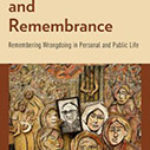Why Torture Doesn’t Work: The Neuroscience of Interrogation

Author: Shane O’Mara
Publisher: Cambridge, MA: Harvard University Press, 2015. 336 p.
Reviewer: William J. Aceves | May 2016
In December 2014, the Senate Select Committee on Intelligence (SSCI) released a redacted summary of its long-awaited report on the Rendition, Detention, and Interrogation Program (RDI Program) operated by the Central Intelligence Agency (CIA). The RDI Program was established by the CIA after 9/11 to interrogate “high value detainees” captured during the War on Terror. It operated worldwide as detainees were transferred and held at CIA “black sites” in various countries, including Afghanistan, Lithuania, Poland, Romania, and Thailand.
The SSCI Executive Summary, which was the only part of the 6,700 page report that was released, offered a detailed description of the detention and interrogation of high value detainees. Even though it was heavily redacted, the report’s findings were extraordinary and deeply troubling.
The report described how “enhanced interrogation techniques” were developed by two CIA psychologists soon after 9/11. These specialized interrogation techniques were based on the U.S. military’s Survival, Evasion, Resistance, and Escape (SERE) training program, which was used to train military personnel to resist interrogation if captured. However, these resistance techniques had never been previously used by U.S. agents against detainees in interrogations. Ten enhanced interrogation techniques were identified: attention grasp, walling, facial hold, facial slap, cramped confinement, use of insects, wall standing, stress positions, sleep deprivation, and waterboarding. The use of these techniques on individual detainees required specific authorization from CIA Headquarters. Other techniques were also used on detainees, including environmental manipulation, sensory deprivation, solitary confinement, dietary manipulation, and forced nudity. These techniques were designed to make detainees weak, fearful, and eventually compliant, thereby facilitating the discovery of actionable intelligence. An alleged “theory of learned helplessness” thus formed the intellectual foundation for the enhanced interrogation techniques. The RDI Program was vetted and approved by legal and medical professionals, including the Justice Department’s Office of Legal Counsel and the CIA’s Office of Medical Services.
The SSCI report examined how CIA personnel used these techniques on suspected Al Qaeda members, beginning with Abu Zubaydah in August 2002. These techniques were soon used on other detainees, including Khalid Shaykh Muhammad, Abd al-Rahim al-Nashiri, and Ramzi Bin Al-Shibh. Over 119 detainees were eventually subjected to these techniques. As described in the report, the application of these techniques on detainees was brutal. Some detainees were subjected to “near drownings,” requiring medical intervention. Others experienced psychotic hallucinations during prolonged sleep deprivation. Detainees would “beg,” “scream,” and “whimper” during interrogation sessions, pleading with interrogators to stop.
When the SSCI report was released, it resulted in great controversy and heated exchanges between critics and supporters of the RDI Program. Critics highlighted the brutality of the Program as evidenced by the interrogations of Zubaydah, Muhammad, al-Nashiri, and Al-Shibh. To these critics, it was evident that detainees had been tortured. They also pointed out a key finding in the report that the RDI Program had not led to actionable intelligence. Supporters of the RDI Program charged that the report was deeply flawed and partisan in nature. Surprisingly, supporters did not question the brutality of the RDI Program or even that torture had occurred. Rather, they argued that the use of enhanced interrogation techniques had led to information that prevented terrorist attacks and identified the location of several terrorists, including Osama bin Laden. Eventually, discussions about the RDI Program devolved into a debate over the effectiveness of torture. Did the use of enhanced interrogation techniques lead to actionable intelligence?
Because torture is prohibited by international law, its possible effectiveness as an interrogation technique is legally irrelevant. Despite this, the effectiveness of torture has become the dominant question in the discourse regarding interrogating detainees in the War on Terror.
Within this discourse, Shane O’Mara’s book, Why Torture Doesn’t Work: The Neuroscience of Interrogation, is of central importance. O’Mara is a Professor of Experimental Brain Research at Trinity College in Dublin whose research addresses human memory, cognition, and decision-making as well as the effects of stress and depression on the brain. His book offers one of the first detailed explanations of the physiology and psychology of torture. Unlike arguments steeped in legal reasoning or philosophical rhetoric, O’Mara surveys a broad array of studies across multiple disciplines to examine the neuroscience of torture. His findings cast significant doubt on the efficacy of torture and coercive interrogations. O’Mara thus answers the debate and does so in a powerful and compelling manner.
O’Mara defines torture as “the attempt to force information retrieval from the memory systems of the brains of the unwilling.” (p. 8) Such efforts can involve physical or mental pain or suffering. This approach to defining torture leads to the book’s central premise. Torture has significant physiological and psychological implications that are counter-productive to the search for information. It is “a profound and extreme stressor that causes widespread and enduring alterations to the very fabric of the brain – including in the connections between brain cells (synapses) on which memory depends.” (p. 8) If torture is designed to produce actionable intelligence, O’Mara argues it does so in the worst possible way.
For these reasons, O’Mara asserts that statements acquired through torture are of limited value. Torture can elicit inaccurate information. Because torture harms the brain, it can affect cognition and impair memory recall. Indeed, torture harms the very organ from which it seeks information. Threats and fear also have a negative impact on cognitive processing. They affect mood and psychological functioning. Even if cognition and recall are not affected, a victim of torture will likely say anything to prevent further mistreatment. According to O’Mara, “[t]he empirical reality is this: the intelligence obtained through torture is so paltry, the signal-to-noise ratio so low, that proponents of torturing detainees are left with an indefensible case when the protorture case is examined on the terms in which they make the case for torture, especially when considered against other, effective, noncoercive methods.” (p. 2)
The harmful and counterproductive implications of torture on cognition and memory recall are readily apparent when O’Mara critically analyzes some of the enhanced interrogation techniques. He devotes several chapters to examining these techniques. In each chapter, he reviews the medical and scientific literature to cast serious doubt on the efficacy of these techniques to generate meaningful information from detainees.
For example, sleep deprivation was an authorized interrogation technique and commonly used in the RDI Program. Detainees were kept awake for up to 180 hours, typically by being forced to stand while shackled or being placed in stress positions. Sleep deprivation was designed to facilitate interrogation. Mentally, it had the opposite effect. According to O’Mara, sleep deprivation leads to adverse metabolic and cognitive consequences, which impair decision-making and performance. Even minimal sleep deprivation affects memory recall. The physiological consequences of sleep deprivation are equally significant. It affects the cardiovascular and immune systems as well as other metabolic functions. In sum, “sleep deprivation causes a substantial and direct degradation in performance across mood, cognition, learning and memory, and psychomotor states, in direct proportion to the amount of time that the person has been sleep deprived.” (p. 167) In other words, the intelligence value of a detainee decreases as the length of sleep deprivation increases.
The waterboarding of detainees was also an authorized interrogation technique. Waterboarding involved binding the detainee to a bench in a horizontal position with his feet elevated slightly above his head. A cloth is then placed over the detainee’s nose and mouth, and water is poured on the cloth. This restricts airflow and produces a sensation of drowning and suffocation. As O’Mara points out, the psychological and physiological consequences of inducing simulated drowning on detainees are significant. “Waterboarding is a profound stressor, inducing feelings of panic, dread, and imminent death.” (p. 176) In addition, oxygen deprivation is also a metabolic stressor, which leads to stress-induced changes in the brain. Dozens of studies have documented the negative implications of such phenomena on cognition and memory recall.
Environmental manipulation was another commonly used practice. Detainees were placed in cold locations and doused with frigid water to weaken their resistance and persuade them to cooperate with interrogators. But such environmental manipulation harms cognition as evidenced in many studies. Hypothermia negatively affects the brain and cognitive performance, including memory recall. Of course, it also affects basic bodily functions. It should not be surprising, then, to learn that at least one detainee died of hypothermia when he was placed in a stress position and left partially naked in a frigid cell overnight.
Dietary manipulation, social isolation, sensory deprivation, and the use of phobia stressors – all were used against detainees as part of the RDI Program. And yet, their negative effects on human cognition are equally well-documented.
In justifying the use of enhanced interrogation techniques, the CIA argued they were based on scientific studies and supported by medical research. O’Mara notes this is simply false. Meaningful research requires empirical studies based on rigorous and systematic methodologies. Such studies require effective controls, compliance with clinical standards, and falsifiable hypotheses. The RDI Program had no such grounding or support. According to O’Mara, “there was no attempt to use this form of evidence-based thinking in the decision-making process that resulted in the decision to employ coercive and torture techniques as the basis for prisoner interrogations.” (p. 28)
If torture doesn’t work, what does? O’Mara acknowledges there is insufficient research on effective interrogation methodologies. But, the study of neuroscience offers several suggestions for acquiring information from detainees. Human beings are social creatures and hard-wired to value affiliation. Interrogation methodologies should thus be structured to facilitate engagement between detainees and interrogators. Likewise, human beings have an innate need to share with others what they know. Coercive interrogations that punish detainees undermine the social context between detainee and interrogator. They prevent an interrogator from developing a positive relationship with the detainee. And, of course, they damage the brain and, therefore, the detainee’s ability to recall memories.
More broadly, O’Mara argues that a scientific approach to the study of interrogation methodologies may cause a wholesale revision to the existing narrative. The traditional view of interrogation involves the isolated and shackled detainee held in a small room and seated at a table with his interrogator at the opposite end. But there is simply no scientific basis to suggest this format is effective for the acquisition of information from detainees. “[T]he obviousness of this method as the appropriate way to engage in interrogation is based solely on intuitions about the relationship between the imposition of extreme stressors and motivation and the subsequent retrieval of information from memory – intuitions that, of course, are utterly false.” (p. 247) Likewise, the theory of learned helplessness, which formed the intellectual foundation of the RDI Program, had no relevance to interrogation. And, the assumption that terrorists are irrational at best or insane at worst lacks any scientific basis.
To remedy these shortcomings, O’Mara calls for greater allocation of resources for research in behavioral science as well as clinical psychology and psychiatry. Both qualitative and quantitative studies could provide valuable insights on interrogation possibilities. “Given the stresses and strains that police and security forces operate under, it is little less than a dereliction of duty that the major government agencies concerned with funding research in these areas have not initiated large-scale experimental or quasi-experimental programs in how to conduct interrogations with a whole variety of individuals who might end up in custody.” (p. 248)
O’Mara does an excellent job referencing the applicable scientific and medical literature to support his analysis. One concern, however, is whether these studies offer an accurate reflection of the entire human experience across national, cultural, and religious groups. It appears that most of the cited sources are from Western researchers in English-language publications. Presumably, the findings on human physiology would remain constant across national, cultural, and religious groups. It is unclear, however, whether such consistency would extend to studies on cognition, psychology, and decision-making. While O’Mara should not be faulted if such studies do not exist, it suggests a gap in research that merits further consideration. At a minimum, O’Mara’s work would benefit from considering the implications of nationality, culture, religion, and similar variables on cognition, psychology, and decision-making.
Regrettably, the debate over the use of torture continues, and questions about its effectiveness remain the dominant discourse. As O’Mara points out, the mythology of torture’s success is now ingrained in modern culture, a reflection of misinformation, wishful thinking, and ignorance. The CIA remains insistent that torture was effective and saved lives. In recent polls, most Americans believe that torture is appropriate when used against suspected terrorists to obtain information about future attacks. Echoing the views of their constituents, some politicians argue in favor of continuing the use of enhanced interrogation techniques, including waterboarding, on suspected terrorists.
O’Mara offers a thoughtful and sober rejoinder to such calls. Torture is simply the worst method for acquiring actionable intelligence from detainees.
References
Senate Select Committee on Intelligence, Committee Study of the Central Intelligence Agency’s Detention and Interrogation Program (2014)
Harlow, Bill. Rebuttal: The CIA Responds to the Senate Intelligence Committee’s Study of its Detention and Interrogation Program (Annapolis: Naval Institute Press, 2015)
William J. Aceves is the Dean Steven R. Smith Professor of Law at California Western School of Law.


